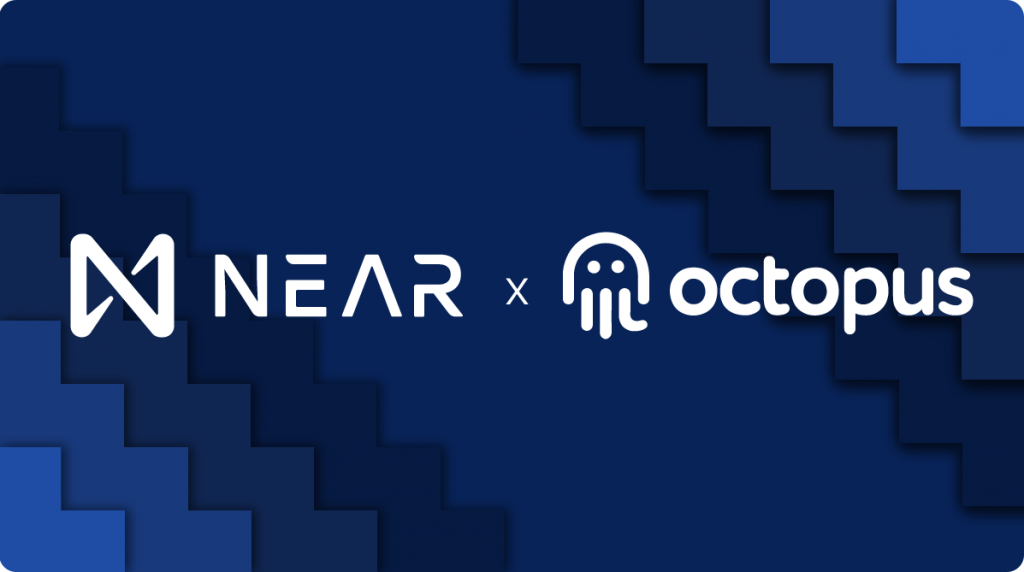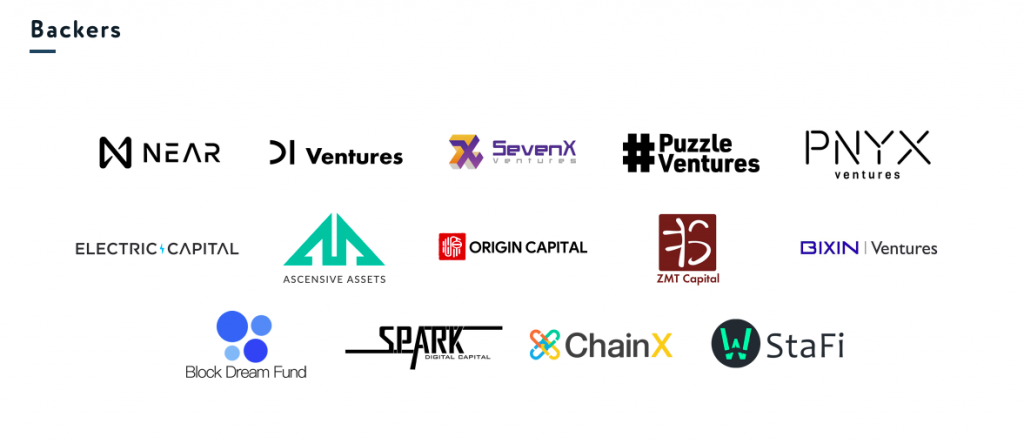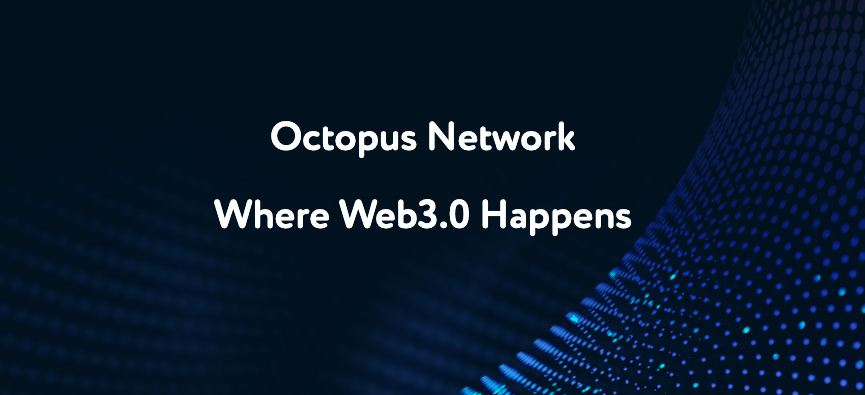Introducing Octopus: The Appchain Network of NEAR’s Future


Blockchain-based ecosystems have evolved in recent years to become more robust, interoperable, and customizable. NEAR Protocol, often referred to as a third generation blockchain network, is a sharded proof-of-stake blockchain that puts a special emphasis on scalability and usability. While NEAR is frequently referenced as a ready-made scalability solution for existing Ethereum applications, it is equally capable of handling a suite of other types of decentralized solutions.
Within this context, Octopus Network is officially launching the first application specific blockchain, aka appchain, protocol in the NEAR Ecosystem: A seismic achievement for NEAR, and a serious competitive advantage for winning over hundreds of applications and developer teams looking for a cost-effective and secure home for their applications.
What Are Appchains and Why Do They Matter?

An appchain refers to a separate blockchain designed for a specific application (or set of applications). Unlike a smart contract (that usually runs on a public or private blockchain), appchains allow developers to customize their application in terms of governance structure, crypto-economic design, even its underlying consensus algorithm.
Technically, an appchain provides developers with a dedicated transaction processing capacity, while still benefiting from the security of the motherchain. This means that applications on an appchain do not have to compete for transaction processing capacity from other applications on a network: A separate and committed set of validators secures transactions from a specific appchain. With flexible security parameters (depending on how many validators support a specific appchain), appchains require their own token, crypto-economic design, incentive models, and customized codebase. In short, with an appchain, a developer or project can harness all of the benefits of having their applications run on their own customizable blockchain, while also enjoying low transaction congestion and state validation from the network ‘motherchain’.
Bringing appchains to NEAR, means that all of the most important stakeholders within the ecosystem will have additional opportunities for their products, services, and interests: Validators, have the capacity to secure appchains for additional rewards. Developers are free to customize and launch appchains with flexible parameters surrounding crypto-economics and governance for different use-cases across Web3.0. Finally, users are able to benefit from a host of new solutions that all sustain themselves upon the security and transaction load capacity of a larger mother network. As blockchain-ecosystems have evolved, and appchains on Polkadot and Cosmos can attest to, the future of crypto is closely related to the efficient deployment of such protocols!
Introducing Octopus Network

Octopus Network, is launching a decentralized protocol for any developer, project, or entrepreneur, to quickly, efficiently, and affordably create their own appchains on NEAR. As founder of Octopus Network, Louis Liu explains:
“Octopus provides out-of-the-box security, interoperability, and on-chain governance to projects looking to create a specific chain for their open web application.”
More concretely, Octopus Network Relay runs as a smart contract on NEAR that provides the infrastructure for a validator marketplace between validators, and appchains launched through Octopus. Validators stake $OCT Tokens to validate a particular appchain. In return, Octopus validators are eligible to receive the respective token of the appchain they are validating: Each appchain has its own crypto-economic model and relevant inflation rate.
Notably, each validator runs a separate node with its own BFT consensus (Byztantine Fault Consensus) for each appchain it validates. However, because every appchain launched on Octopus is connected to NEAR via security, assets and contracts between NEAR and any appchain are able to seamlessly communicate with one another.
Economically: Validators stake $OCT Tokens to earn rewards from the respective appchains on Octopus Network. $OCT Tokens are non-inflatable,
Governance: $OCT Token holders do not partake in the governance of different appchains: That opportunity is left to native token holders of the respective chain.
For Octopus founder, Louis Liu and the Octopus Team, it is clear that the next wave of innovation within the crypto-space, is built around scalable and affordable appchains offered by Octopus and running on NEAR:
“We have come to believe that smart contracts and application specific blockchains – also known as – appchains, each have a unique value proposition. That is to say, a unique advantage over others. They are suitable for different use-cases. And I think for DeFi especially, smart contracts are a better choice since all smart contracts on one platform have the same security assumption – the same security level – and they can get fabulous composability. For other Web3.0 use-cases including gaming, digital collectables, NFTs and the broader creator economy including music, radio, and even blogs, DAO platforms, IoT platforms, and much more-, an appchain is a better option for such use-cases, because an App chain is able to reach a delicate balance between decentralization and performance. What’s more, on-chain governance allows for appchain to quickly evolve with the legitimacy to stay relevant – This is cumbersome if not possible to carry out within a smart contract.”
How Does Octopus Network Actually Work?

Octopus Network is built around the $OCT Token: A fungible, non-inflationary utility token, that is required for staking on different appchains built on top of the protocol. Accompanying this design, are a number of preconditions and functionalities built into Octopus Network:
1. First, an appchain must accrue a sufficient stake in $OCT Tokens from ecosystem stakeholders. Only once this minimum level of security has been reached, is it possible to launch the appchain with the genesis block originating on the motherchain.
2. Second, Octopus pioneers ‘Shared Security as a Service’ and ‘Shared Interoperability as a Service’ for any future appchain on NEAR Protocol: As more validators accrue to stake for a certain appchain, the appchain validator set is updated in the motherchain smart contract and propagated onto the appchain. This is the basis for an appchain increasing its security parameters over time and can be effectively coined as a “Shared Security as a Service” operation. Similar to how AWS provides data storage to software companies, Octopus provides security services to blockchain ecosystems looking for fast onboarding and lean development.
3. Third, once fully launched, Octopus appchains are fully interoperable with motherchain assets. $OCT Tokens are equally capable of being used as collateral for cross-chain assets between appchains and the motherchain.
4. Fourth and most notably, the appchain itself is governed by its own token holders and not validators staking $OCT Token.
As the image above demonstrates, for the launch of new appchains, a specific process is required in order to be legitimized on the Octopus Network: (1) Prospective appchains enter a queue, and await validator support via staking $OCT Tokens. (2) Once supported, their appchain is able to activate and fully launch. (3) In the event that validators retire, the appchain is considered ‘broken’ until more accrue. (4) In the event that no more assets exist on the appchain (due to cross-chain transactions) the appchain is considered ‘frozen’.
Why Did Octopus Network Choose NEAR?

Octopus Network decided to build on NEAR after an extensive analysis of existing Layer 1 Protocols. According to Louis Liu, NEAR was chosen due to its scalable, interoperable, secure and user-friendly design:
“Last year we cooperated with several public blockchains. We are quite familiar with the public chain space. After comparison and investigation we came to believe that NEAR protocol is the best choice due to its security, fast finality, layer1 scalability and usability features. In addition, the rainbow bridge enables trustless interoperability between ETH and NEAR, making it a clear first choice.”
In light of other Layer 1 platforms that can accommodate appchains like Cosmos (Cosmos Chains), or Polkadot (Parachains), NEAR stands out with some key technical benefits: In relation to Cosmos, launching an appchain on NEAR is easier to do, as validators do not need to be bootstrapped for each individual appchain. As a result, ‘fair-launched’ chains can be created on NEAR, since tokens are only distributed to value bringing services (as opposed to speculators or those looking to secure the network). In relation to Polkadot, NEAR offers appchains with a significantly cheaper security lease, with no limit on the number of appchains capable of being launched. Polkadot’s limit is 100 parachain slots with less than 10 available this year. There is also no auction or ‘lock in’ on NEAR, as is the case on Polkadot.
Altogether, NEAR was chosen by Octopus because it was considered to be more affordable, scalable, user-friendly, and interoperable with networks like Ethereum than any other existing L1 solution.
Short and Long Term Potential: What Can Octopus Network Bring to NEAR?

While the Web3.0 revolution remains in its infancy, NEAR is continuously expanding into different frontiers of crypto innovation. The promise of Octopus appchains on NEAR accelerates this progress for both the short term and long term development of the protocol:
In the short term, NEAR has a unique value proposition to the HUNDREDS of applications looking to build their own chain on a secure, affordable, scalable, and user-friendly Layer 1 platform. Not only will this increase the overall value of products and services within the NEAR Ecosystem but it will also bring a host of new assets and users onto the protocol.
“For Octopus Network, each Octopus appchain will be given a tribute cross-chain smart contract on the NEAR platform. That means that their native crypto currency can be transferred to the NEAR blockchain without any additional coding. We want to pull all of the appchain assets onto the NEAR platform, as a boost to a truly prosperous DeFi ecosystem. This DeFi ecosystem will provide each asset with additional liquidity and utility.”
In the long term, Octopus Network will function as a composable means by which different applications can operate with different security parameters on NEAR: Some applications may not need such high security from validators in order to prosper. Octopus Network effectively allows for developers on NEAR to quickly spin-up applications with low security in a cost-effective manner. If that application requires more security over time, Octopus allows for security to scale with the appchain by simply attracting more validators by token price appreciation or issuing more tokens to security service providers (from the native appchain itself).
For future apps on NEAR, Octopus appchains provide flexibility to projects and developers when scaling an individual application on NEAR. With Octopus Network accommodating to the NEAR Account model, any appchain will respond to contract calls like any other application on NEAR: This means that an app is able to transition from a contract to an app chain or vise-versa, as a project may come to need cheaper transactions, or if the application starts to manage more assets and needs more security and faster finality than what the NEAR motherchain offers.
The Octopus Network Team

The team behind Octopus Network is exceptionally talented and experienced in both the crypto space and in mainstream software development. With a team of eight engineers, Octopus has worked on grants across Layer 1 Protocols including Cosmos, Solana, Flow, Oasis, PlatON, and ChainLink. They have successfully built IBC for Substrate, and also initial Substrate online training course in China with other Substrate enthusiasts (from which a number of projects have originated from). Most notably, they are also active participants and co-organizers of the Rust community in China (they organize RustCon in China).
From this perspective it becomes clear that not only will the Octopus Team inaugurate a new paradigm of development for NEAR Protocol, but they will also bring a heavy influence from the Chinese Rust community, when it comes to building and deploying appchains on the protocol.
Conclusion: A New Frontier of Innovation
With appchains deployed on NEAR through Octopus Network, a world of new applications, crypto-economic models, governance mechanisms and decentralized solutions are poised to launch on NEAR Protocol. While NEAR will capably handle Octopus appchains in an efficient, scalable, and cost-effective manner, Octopus Network holds the promise of bringing entire communities of developers onto NEAR. As the Web3.0 space continues to evolve, and new decentralized applications emerge by the day, the partnership between Octopus Network and NEAR holds the promise of significantly accelerating the development of the Open Web – to the great benefit of users, developers, and entrepreneurs alike.




